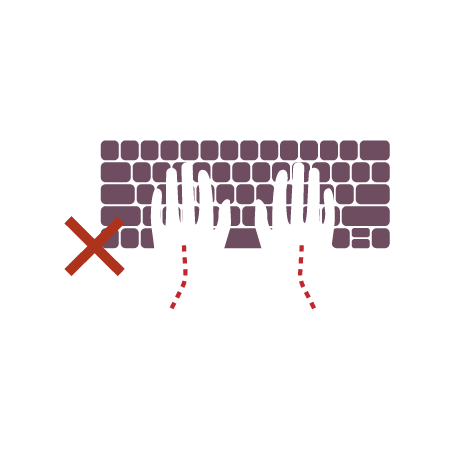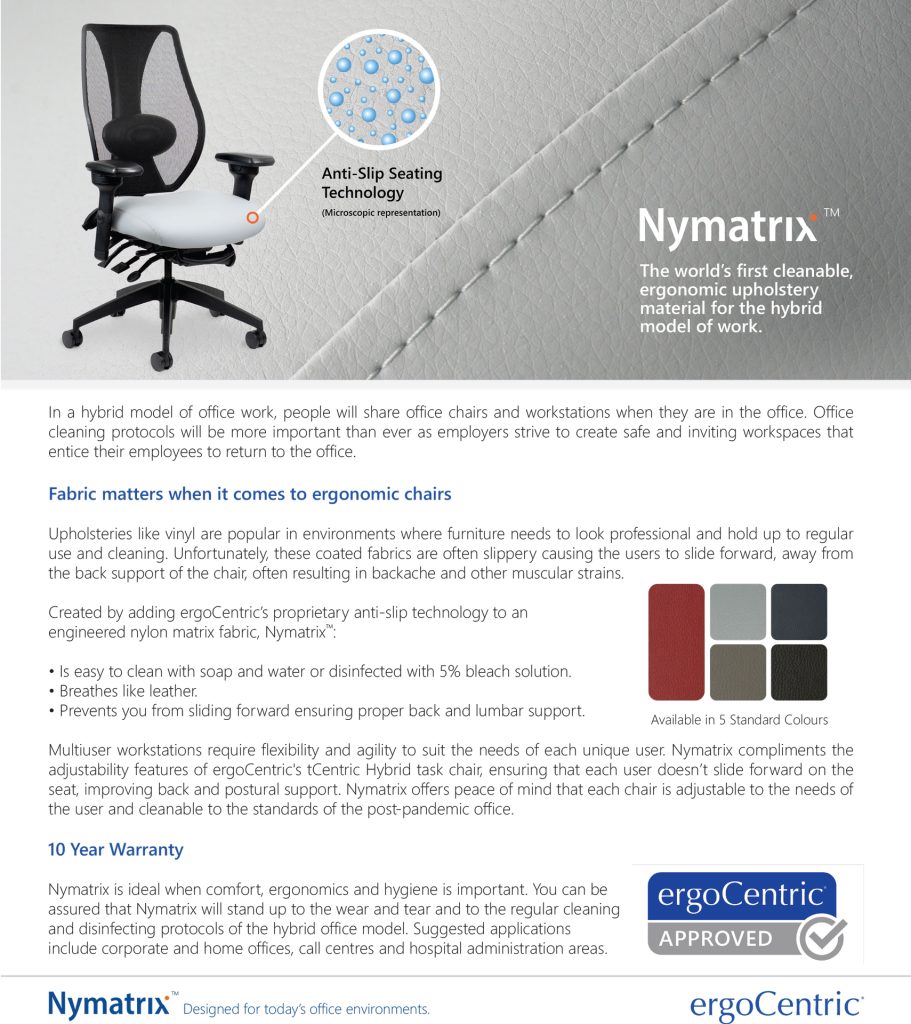Develop good posture habits
For office workers, it is enough to respect a few basic principles to have good posture, and thus avoid the discomforts, pains and aches inherent in an inadequate posture.
Stopping during the day to ask yourself if our posture is adequate can be a very good reflex to develop.
And always keep in mind that the goal is to work in a position that comes as close as possible to the natural, neutral position of the body.
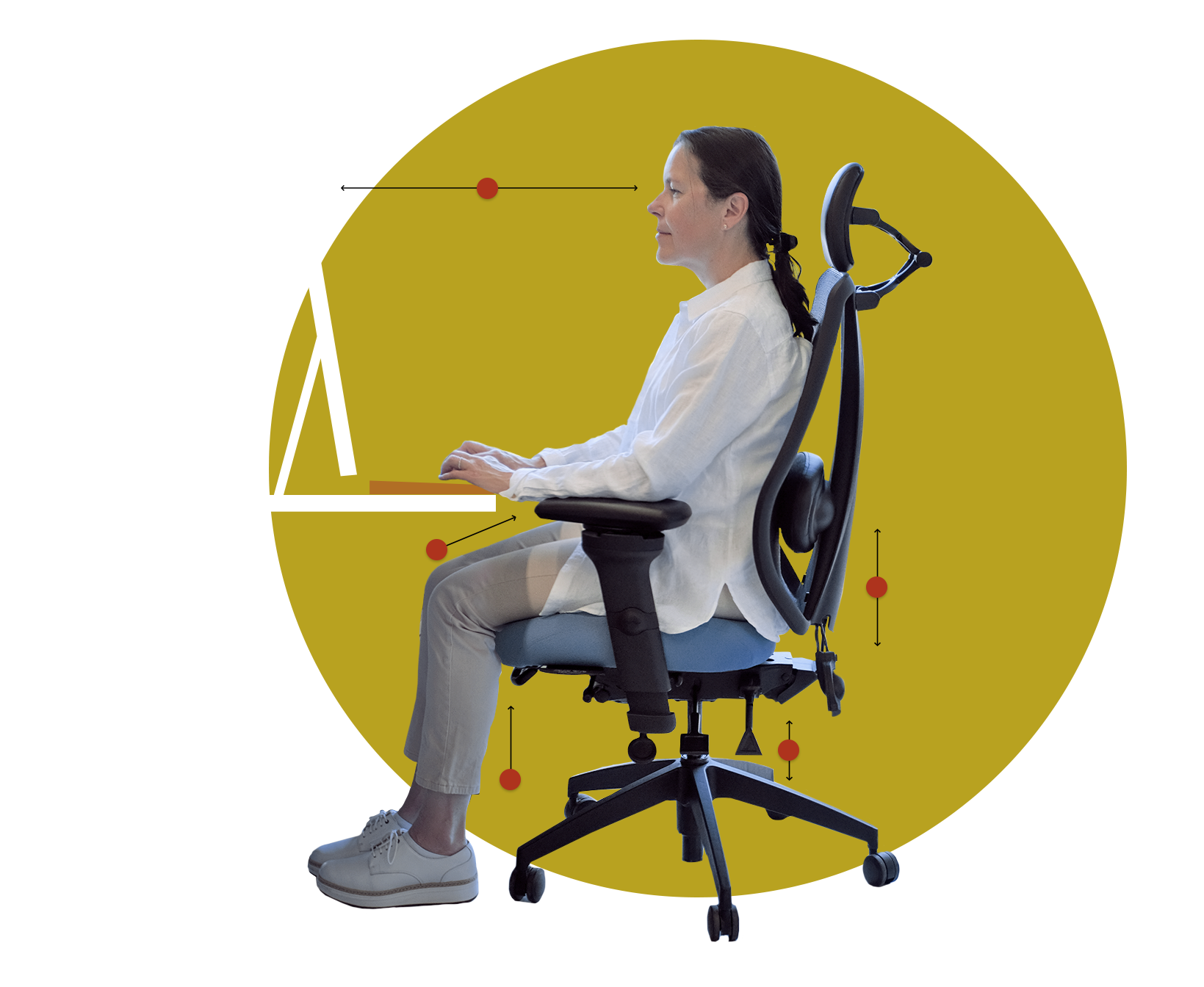
CLEAR SOME SPACE BEHIND THE KNEES
Adjust your seat’s depth so that you have some room behind the knees.
More details
SEAT HEIGHT ADJUSTMENT
Adjust the height of the seat of the chair or armchair below the level of the kneecap.
WORK SURFACE
When the work surface is not adjustable, modify the height of the seat to bring the elbows to the same level as the keyboard.
When the feet are not resting on the ground, add a footrest.
Adjust the height of the seat in relation to the work surface according to the task at hand.
HAND POSTURE
- Use the wrist rest only to avoid resting on hard surfaces or sharp edges.
- Adopt good working methods.
- Avoid extreme fist postures.
MONITOR LOCATION
Some people, especially those wearing bifocal corrective lenses, prefer the screen to be lower.
- Tilt the monitor back.
Watch out for reflections! - Provide a support with articulated arm to place the monitor in the desired location
MOUSE LOCATION
When the keyboard support is not wide enough to place the mouse on, place the mouse on a shelf fixed to the work surface or to the armrests. Make sure the arm remains at your side.
You can also place the keyboard and mouse on the work surface. However, it will be necessary to correct the setting and layout of the station.
ILLUMINANCE
To eliminate glare:
- avoid placing the workstation under a light fixture;
- stand sideways to the window;
- equip the luminaires with diffusers;
- choose a light wallpaper and dark characters;
- as a last resort, place an anti-glare filter on the screen.
WORK ORGANIZATION
Even the most comfortable posture needs to be changed periodically.
Ex.:
- tilt the seat slightly forward or
- tilt the seat back slightly.
Vary the postures and plan breaks of 5 to 15 minutes every hour depending on the intensity of use of the keyboard and mouse.
Ex.:
- intersperse screen work with other tasks;
- take short but more frequent breaks.
Adopt a regular and reasonable work rhythm for yourself.
Occasionally look away from the screen.
Regularly stretch your muscles or do relaxation exercises.
